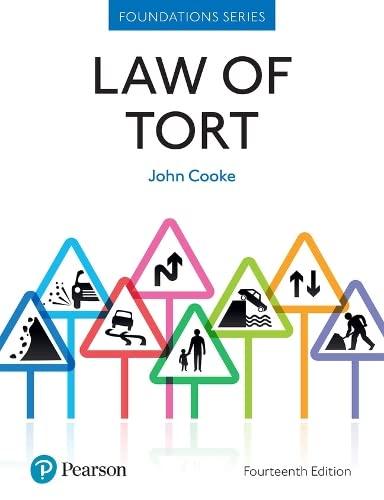Question
1) Brenda Brandt had a medical device implanted as part of her treatment for a serious medical condition. A charge for the device was included
1) Brenda Brandt had a medical device implanted as part of her treatment for a serious medical condition. A charge for the device was included in the hospital bill. Later, the device was recalled by its manufacturer as substandard. Brandt had suffered serious complications, and the device was removed. She brought suit against the hospital for, among other things, breach of warranty under the Uniform Commercial Code. Was the purchase of the medical device from the hospital covered under the Uniform Commercial Code? Explain. [See: Brandt v. Boston Scientific Corporation, Docket No. 93982, Illinois Supreme Court (IL).]
Note: It deals with the Uniform Commercial Code.The UCC deals with goods.However,the primary relationship between Brenda and the hospital was the service that the hospital was giving her.Keep that in mind.
2) Paul and Cynthia Vance invited Carl and Jeanne Leichtamer to go for a ride in the Vances' four-wheel-drive Jeep at an "off the road" recreation facility called the Hall of Fame Four-Wheel Club. The club had been organized by a Jeep dealer who showed films to club members of Jeeps traveling in hilly country. This activity was coupled with a national advertising program of American Motor Sales Corporation encouraging people to buy Jeeps that could drive up and down steep hills. As the Jeep went up a 33-degree sloped, double-terraced hill, it pitched over from front to back and landed upside-down. The Vances were killed, and the Leichtamers were severely injured. The Jeep was equipped with a factory-installed roll bar attached to the sheet metal that housed the rear wheels. When the vehicle landed upside down, the flat sheet metal gave way, causing the roll bar to move forward and downward 14 inches. The Leichtamers argued that the weakness of the sheet metal housing upon which the roll bar had been attached was the cause of their injuries. The manufacturer claimed that the roll bar was provided solely for side-roll protection, not pitch over, as occurred in this case. Did the Leichtamers recover against the manufacturer on a theory of strict liability? Why or why not? [See: Leichtamer v. American Motors Corp., 424 N.E.2d 568 (OH).]
Note: This is a strict liability issue.You need to ask yourself whether what the Jeep manufacturerwas promoting was unreasonably dangerous.
Step by Step Solution
There are 3 Steps involved in it
Step: 1

Get Instant Access to Expert-Tailored Solutions
See step-by-step solutions with expert insights and AI powered tools for academic success
Step: 2

Step: 3

Ace Your Homework with AI
Get the answers you need in no time with our AI-driven, step-by-step assistance
Get Started


